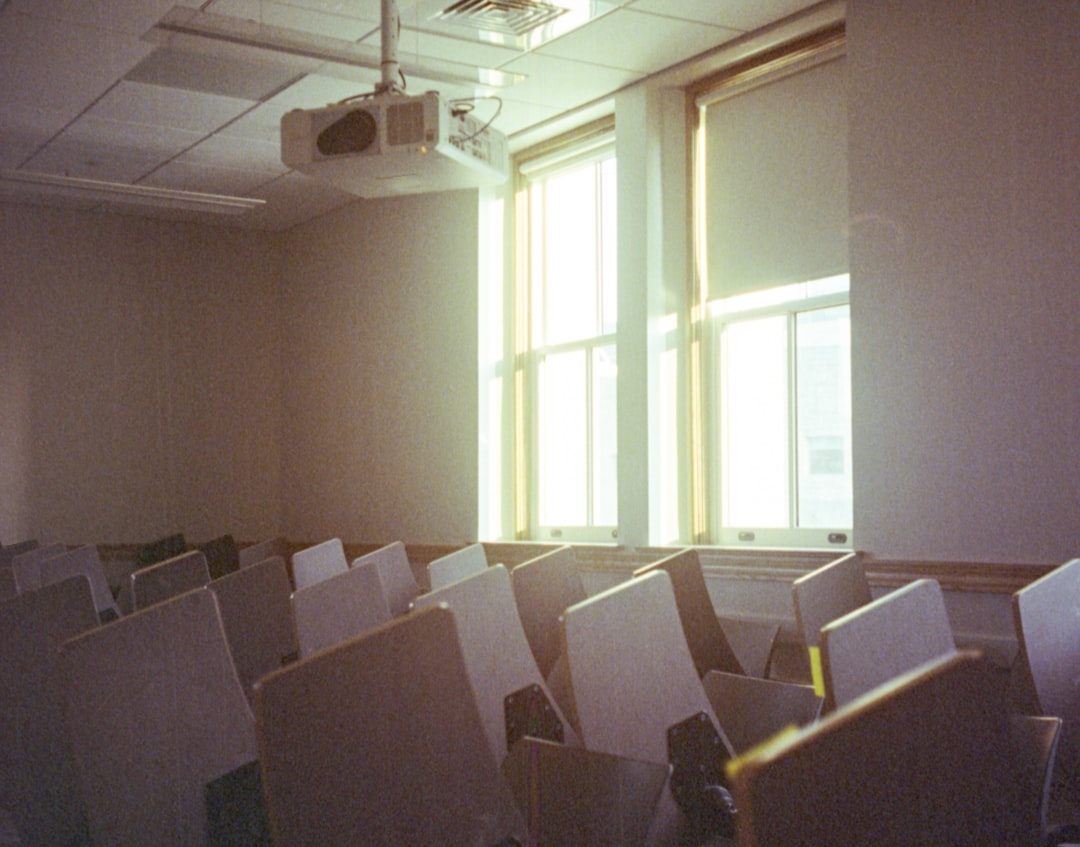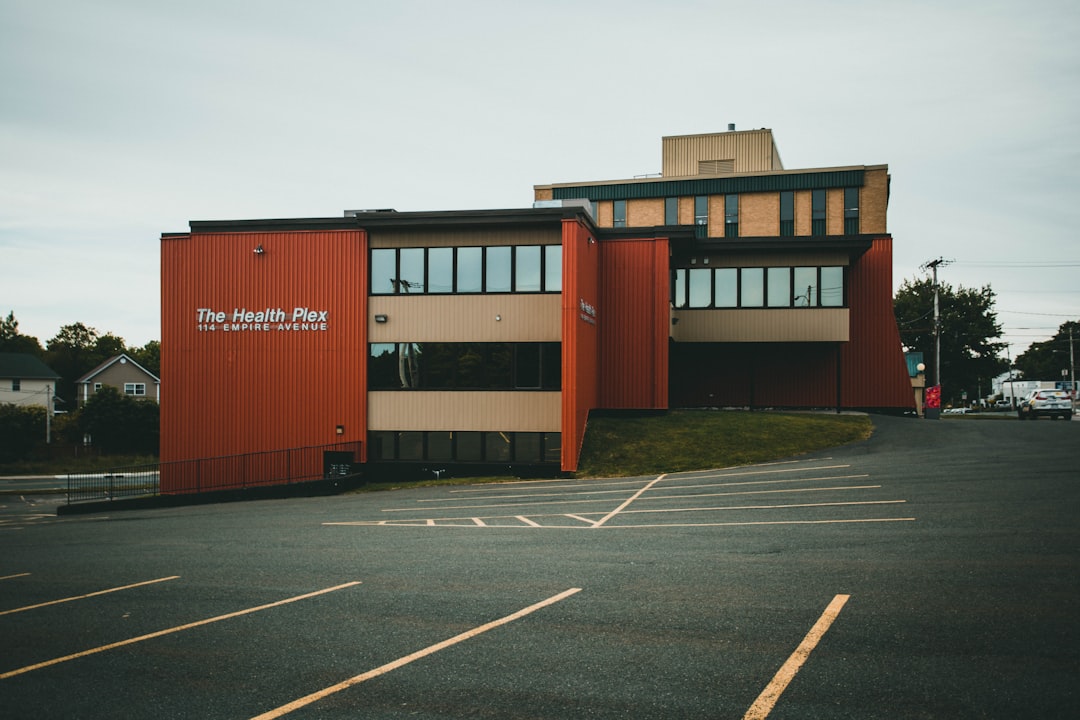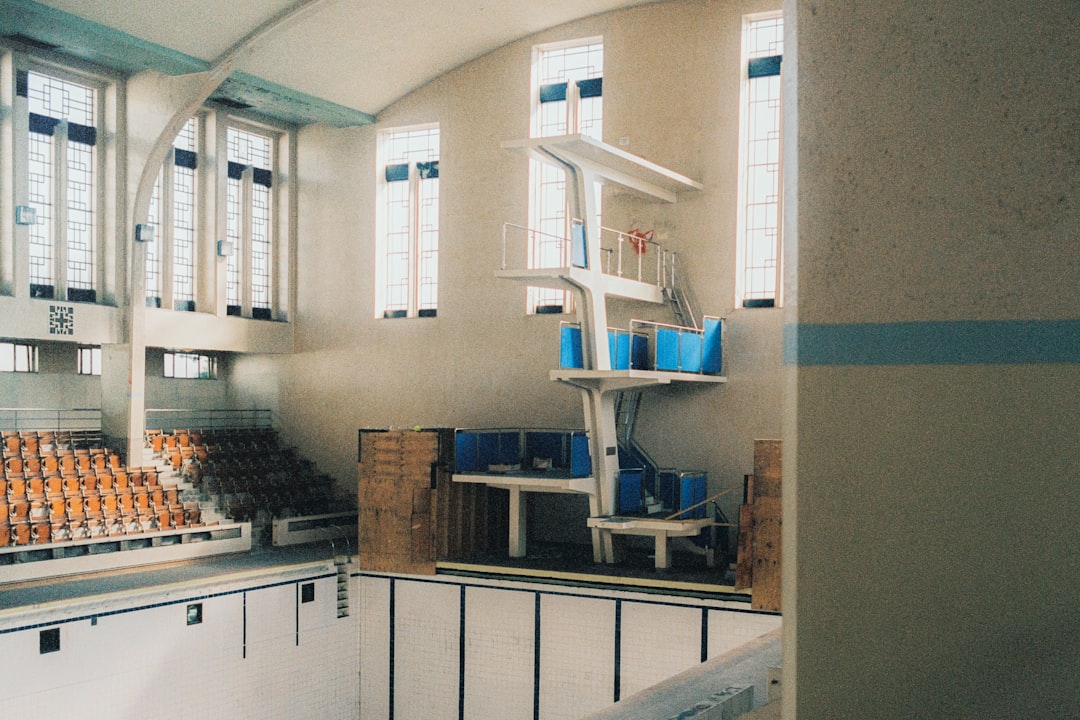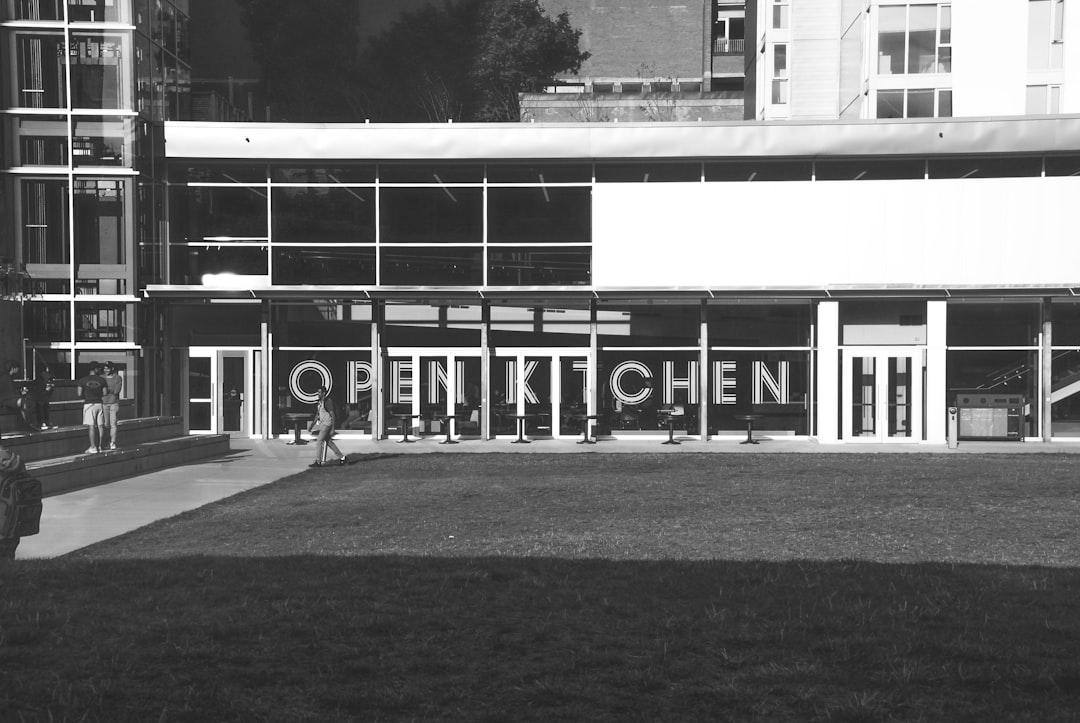

Engage prospects with a scan and streamline customer engagement with FREE QR code marketing tools by Sona – no strings attached!
Create a Free QR CodeFree consultation

No commitment

Engage prospects with a scan and streamline customer engagement with FREE QR code marketing tools by Sona – no strings attached!
Create a Free QR CodeFree consultation

No commitment
In today's evolving digital landscape, marketers are seeking more precise ways to connect with their target audiences. Understanding audience segmentation has become essential. By leveraging robust audience insights, advertisers are better able to tailor their campaigns for maximum effectiveness. Explore the fundamentals of audience segmentation to better understand how data can drive more meaningful engagement.
When it comes to digital advertising, measurement is key. Marketers need reliable tools to assess campaign performance and optimize accordingly. Utilizing advanced campaign measurement solutions helps ensure investments are yielding the desired outcomes, providing actionable feedback for further refinement.
Another critical aspect is creative strategy. The quality and relevance of ad creatives can significantly influence a campaign's impact. Modern platforms offer marketers various tools for creative testing and optimization. By tapping into ad creative recommendations, brands can ensure their message resonates with audiences while driving the best possible results.
QR codes have revolutionized aesthetician training schools by transforming feedback collection into a seamless, data-driven process. Beyond simplifying surveys, they enable schools to capture real-time insights from students and instructors, enhancing curriculum effectiveness and elevating the overall learning experience. Imagine instantly knowing which training modules resonate most and where improvements are needed—empowering your institution to deliver exceptional education tailored to student needs.
With Sona QR, you can create dynamic, trackable QR codes in seconds that update on the fly without costly reprints. Every scan connects directly to actionable feedback, helping you refine programs, boost student satisfaction, and ultimately attract more enrollments. Start for free with Sona QR today and turn every scan into meaningful feedback that drives your school’s success.
The best aesthetician training schools vary by location, so researching local accredited institutions and reading reviews can help you find suitable options near you.
To become an aesthetician, you typically need to complete a state-approved training program and meet any licensing requirements specific to your region.
Aesthetician training programs usually take several months to a year to complete, depending on the school's curriculum and schedule.
The cost of aesthetician training varies widely based on the school and program length, so it is important to research and compare tuition fees at different institutions.
Job prospects for aestheticians are generally positive, with salaries depending on experience, location, and work setting.
Aesthetician training focuses on skin care and treatments, whereas other beauty professions may specialize in hair, nails, or makeup artistry.
Choosing the right school involves considering factors such as accreditation, curriculum, faculty expertise, location, and student reviews.
Aesthetician schools must be accredited by recognized bodies to ensure their programs meet industry and educational standards.
Yes, most states require aestheticians to obtain a license by completing approved training and passing a licensing exam.
Aesthetician training programs typically include courses on skin anatomy, facial treatments, hair removal, makeup application, and safety protocols.

Aesthetician training schools are navigating an increasingly competitive environment where expectations for accountability, student satisfaction, and measurable outcomes are higher than ever. As new cohorts of students demand real-time communication and personalized support, schools face mounting pressure to capture actionable feedback quickly and efficiently. Traditional strategies such as paper surveys, after-class interviews, and email requests often fall short. This results in missed opportunities to connect with high-value prospects, low response rates, and a limited view of what truly drives engagement or churn.
The challenge for many programs lies in bridging the gap between in-person learning environments and digital engagement channels. QR codes now offer aesthetician training schools a seamless, accessible way to gather immediate feedback, identify anonymous prospects, and map the full journey from campus visitor to alumni advocate with the Sona QR product overview. By embedding QR codes throughout training spaces, admissions offices, event materials, and alumni communications, schools can surface valuable insights at pivotal moments without relying on delayed indicators such as manual forms or post-hoc interviews.
This guide explains how QR codes not only replace outdated processes but also enable aesthetician programs to modernize feedback collection, automate data flows, and drive continuous improvement. Discover how leading schools leverage flexible platforms to centralize feedback, respond to satisfaction trends, and connect every campus interaction with long-term student outcomes.

Many aesthetician training schools struggle to reach all students when relying on paper forms, email surveys, or verbal feedback. These analog approaches often collect information after the moment of experience, which reduces accuracy and participation. QR codes compress the gap between experience and response. Students or visitors scan, tap a quick survey, and submit feedback before they leave the room or shift mental contexts.
To get the most from QR-driven feedback, position your codes where intent is highest and clarity is strongest. Make each scan meaningful with a short path to completion, context-aware prompts, and a visible value exchange. For example, promise that aggregated insights will directly shape curriculum refinements or lab upgrades, and close the loop by sharing what changes were made because of student input.

In an environment where many potential students visit a campus or browse school materials without ever filling out a form, visibility into those touchpoints is vital. Prospective learners walk through teaching clinics, attend a demo day, or pick up a brochure, yet many never cross the threshold to a formal inquiry. QR codes bridge that gap by turning passive interest into actionable signals that admissions teams and program leaders can use, as shown in these aesthetic QR ideas.
QR codes also improve the quality and timeliness of student sentiment. Instead of relying on end-of-term surveys that are long and backward-looking, schools can collect feedback after individual modules, assessments, or client-service days. This creates a continuous stream of micro-insights that administrators can respond to in weeks rather than semesters.

Different QR code formats align with different objectives in aesthetician training environments. Rather than using a single type of code for everything, match the format to the action you want someone to take. This ensures a smoother experience and more reliable data capture.
Dynamic QR codes are often best for feedback initiatives, supporting tracking, editing, and A/B testing. Static codes have a place for fixed resources such as campus maps or clinic hours, but they lack flexibility and reporting. A strategic rollout mixes both types based on durability and measurement needs.
Growth starts with recognizing that every physical surface on campus can become a digital entry point for feedback, interest, or action. The goal is not to saturate the environment with codes but to place them intelligently where intent and attention are naturally high. A deliberate rollout concentrates on a small number of high-traffic, high-intent placements, then expands based on performance.
Another fertile area is lifecycle mapping. Students and prospects move through stages such as interest, application, enrollment, skill mastery, client service, graduation, and alumni engagement. If each stage includes one or two QR-enabled touchpoints, you will create a connected experience and an analytics-rich feedback loop. For sector ideas, browse education strategies.

Schools often miss engagement signals that could drive curriculum improvements, improve retention, or identify upsell opportunities. Strategic QR deployments create simple, timely prompts that capture both quantitative scores and qualitative comments, and they convert anonymous interactions into known contacts.
Design each use case with a clear outcome. If the desired result is actionable insight, limit surveys to three to five questions and allow open feedback. If the goal is lead capture, emphasize a short form and a compelling value exchange, such as a checklist download or an application fee waiver.
By reducing friction and surfacing feedback that might otherwise remain hidden, schools gather higher-quality insights from a broader audience and create an institutional habit of continuous improvement.
A pervasive challenge for aesthetician schools is converting anonymous visitors into known, qualified leads without relying on pushy tactics. Each QR scan is a micro-conversion that contains rich context: where it happened, what the offer was, and when it occurred. By deploying multiple codes across touchpoints, you automatically segment audiences and can tailor follow-up based on real behavior. For ad activation tactics, see intent-driven retargeting.
To make this work at scale, connect your QR platform to your CRM or marketing automation tool. As scans flow in, assign tags like “open-house attendee,” “evening cohort prospect,” or “advanced peel interest.” These tags drive personalized email sequences, SMS nudges, and paid retargeting audiences that reflect what people actually want.
Many schools struggle when print collateral, digital campaigns, and campus interactions operate in silos. QR codes provide a connective tissue that unifies these channels by turning every offline encounter into measurable online engagement. The result is consistent messaging, better attribution, and more efficient spend.
A connected approach also builds resilience. If an email gets ignored, a mirror cling might prompt action. If a prospective student forgets your URL, a poster in a cosmetology supply shop can redirect them to your admissions page. Layered touchpoints ensure that your message meets your audience where they already are.
A successful QR initiative in an aesthetician training school starts with clarity: what business outcome you want, who is the audience, and what action should a scan trigger. Once those fundamentals are set, you can choose formats, design codes, deploy them in context, and measure performance. The checklist below follows that arc so you can launch quickly and iterate with confidence.
Coordinate across admissions, academics, and operations so that feedback and lead signals reach the right stakeholders. Develop a simple governance plan that defines who updates destinations, who monitors analytics, and how frequently iterations occur. This prevents drift and ensures every scan is tied to an owner and an outcome.
Define one primary outcome per QR placement. For a classroom pulse check, the outcome is a statistically reliable satisfaction snapshot within 24 hours of instruction. For an open house poster, the outcome is a completed inquiry form that routes to admissions within minutes.
Write objective statements that include audience, context, and metric. For example: “Collect a minimum of 30 feedback responses from evening cohort students after the chemical peel lab within two days, targeting a 70 percent completion rate and average satisfaction above 4.2 out of 5.”
Dynamic codes let you change destinations, run A/B tests, and collect analytics such as device and location. They are ideal for any placement where learning and iteration matter. Explore Sona QR to manage these updates centrally.
In contrast, reserve static codes for evergreen resources like campus maps or clinic hours. If the content is unlikely to change and measurement is not required, static codes are sufficient and can be printed in bulk.
Design QR frames that use brand colors and a short, benefit-led call to action. Examples include “Scan to rate today’s lab in 60 seconds,” “Scan for scholarship deadlines,” or “Scan to join alumni directory.” For ready-made assets, try QR code flyers.
Before mass printing, test scannability on glossy surfaces, under bright ring lights, and at the distances typical of where users will stand. Validate on both iOS and Android cameras and at multiple sizes to avoid failures that suppress scan rates.
Place codes where attention is already engaged and hands are free. In labs, mount codes at eye level on station tents. At events, put codes at entry and exit to capture intent before people disperse. In packets, include a code on the first page with an incentive to scan before class begins.
Use directional cues such as arrows, contrast boxes, and short headlines to draw the eye. Pair each code with a visible promise, such as “We read every comment” or “Share your feedback to help us improve next week’s session.”
The biggest threat to new QR code campaigns is a lack of clarity around goals or inattention to logistics such as lighting, line-of-sight, and print quality. To avoid wasted effort and maximize impact, pilot with a few placements, measure, and iterate weekly. Small, fast cycles reveal what works before you scale.
With integrated reporting, schools can ensure every scan is mapped to actionable improvements and supports broader marketing or engagement objectives. Build a simple dashboard that visualizes scans and completions by location and cohort. Share weekly highlights with faculty and admissions so the whole organization learns together.
Review scans, completion rates, and sentiment scores by code. If a lab poster underperforms, test alternative CTAs, repositioning, or a larger print size. If a form has high scans but low submissions, shorten the form or split it into two steps.
Adopt a habit of monthly refreshes for creative and quarterly audits for placement. Retire codes that no longer serve a purpose and repurpose high performers with updated content to maintain momentum.
Feedback strategies often collapse due to a lack of visibility into what is working or who is engaging. The solution is to track the entire journey from scan to action and then connect those actions to downstream outcomes such as applications, enrollments, or alumni referrals. When this data is centralized, leaders can prioritize interventions, optimize campaigns, and prove return on investment. For measurement context, read about revenue attribution.
Best-in-class programs combine QR analytics with CRM data and student information systems. They assign a campaign and cohort tag to each code so that later, when an individual applies or completes an advanced certificate, you can attribute part of that momentum to earlier touchpoints such as an open house scan or a clinic review.
Platforms like Sona QR and Sona.com make it straightforward to capture detailed scan data, enrich contacts, and attribute influence across channels. Sona QR captures the who, what, where, and when of each scan. Sona.com connects those engagements to downstream outcomes through identity resolution and multi-touch attribution, so you can see how QR activity contributes to pipeline and enrollment.
Maintaining QR campaign effectiveness across a busy campus requires operational discipline, clear messaging, and fast iteration. The tips below help you scale without sacrificing quality and ensure that scanning becomes part of the culture instead of a novelty.
Small process changes compound. When faculty remind students to scan before they pack up, when admissions uses the same CTA language everywhere, and when operations follows a monthly test-and-learn rhythm, scan rates rise and data quality improves without heavy lifting.

Schools have transformed their feedback and engagement processes by embedding QR codes at critical touchpoints, then closing the loop with fast action. The examples below illustrate how targeted placements, clear CTAs, and dynamic measurement combine to deliver outsized results.
Creative deployments often start small. A single program swapped paper forms for QR posters and saw results within a week. Success stories like these help secure buy-in for campus-wide rollouts and show faculty the tangible benefits of real-time feedback.
When QR codes are integrated at the point of experience, schools create a low-friction pathway for feedback and advocacy. The key is to pair every scan with a next step, a real owner, and a clear promise to act on what is learned.
Many QR initiatives underperform due to visibility issues, generic messaging, or static designs that go stale. Successful programs treat QR codes as living assets that need context-aware design, frequent testing, and consistent staff support. The following practices help you avoid common traps and maximize ROI.
Accessibility is essential. Beauty school environments involve bright lights, reflective surfaces, and varied distances. Prioritize contrast, size, and placement that work in these conditions. Conduct scanning tests with older and newer devices to ensure no student or visitor is left out.
For aesthetician training schools seeking to modernize student engagement and feedback loops, QR codes offer a practical, high-impact solution that fits seamlessly into busy campus environments. The most successful programs combine thoughtful placements, dynamic infrastructure, and a strong culture of follow-through so that every scan moves the institution toward better outcomes.
By converting every physical interaction into a measurable digital touchpoint, schools gain unprecedented visibility into student needs, drive higher satisfaction, and surface opportunities for improvement and growth. When feedback workflows are connected and automated, even previously anonymous or disengaged students become part of a continuous cycle of improvement and advocacy, fueling future enrollment and institutional excellence. Schools that adopt platforms like Sona QR and integrate scan data into systems like Sona.com, HubSpot, or Salesforce are especially well-positioned to connect scans to revenue and retention, prove impact, and iterate faster than their peers. For ad measurement and modeling context, see offline attribution. Start creating QR codes for free: Start creating QR codes for free.
QR codes have revolutionized aesthetician training schools by turning traditional feedback collection into an engaging, real-time process. Beyond simply gathering student insights, QR codes enable these schools to enhance training quality, improve student satisfaction, and streamline communication—all vital for building a stronger reputation and attracting new enrollees. Imagine instantly knowing which lessons resonate most or identifying areas needing improvement the moment feedback is submitted.
With Sona QR, you can effortlessly create dynamic, trackable QR codes that update on the fly without reprinting materials. This means every scan delivers actionable data, helping you refine curricula, boost student engagement, and demonstrate measurable program success. Start for free with Sona QR today and transform every feedback scan into a powerful tool for growth and excellence in your aesthetician training school.
The article does not specify particular schools but suggests looking for programs that use modern engagement tools like QR codes to enhance student feedback and outcomes.
The article does not detail specific qualifications but implies completion of accredited aesthetician training programs is required, often followed by licensing.
The article does not state exact durations for aesthetician programs.
The article does not provide information on the cost of aesthetician training programs.
The article does not discuss job prospects or salary details for aestheticians.
The article does not compare aesthetician training with other beauty professions.
Choose schools that prioritize real-time feedback, accountability, personalized support, and use modern tools like QR codes to connect student engagement with outcomes.
The article does not specify accreditation requirements but highlights the importance of schools demonstrating measurable outcomes and accountability.
While the article does not explicitly state licensing requirements, aestheticians typically need a license after completing training.
The article mentions modules such as chemical peel labs, hands-on labs, product knowledge workshops, and client-service days as common parts of aesthetician training programs.
Schools can use QR codes placed strategically in classrooms, clinics, and events to collect immediate, context-specific, and actionable feedback from students and visitors.
QR codes increase response rates, provide real-time feedback, bridge offline and online engagement, enable dynamic content updates, and connect feedback to student outcomes.
Place QR codes in high-traffic, high-intent locations such as classrooms, labs, clinic stations, event signage, graduation materials, and admissions offices.
Dynamic QR codes for feedback and tracking, static codes for fixed resources, web links, forms, vCards, Wi-Fi access, SMS or email prompts, and app download links are all useful.
QR codes convert anonymous visitors into qualified leads by capturing context-rich data for personalized follow-ups, retargeting, and campaign optimization.
Use unique codes per placement, clear branded CTAs, test scannability, position codes where people pause, automate follow-ups, train staff, and offer tangible incentives.
By monitoring scan volumes, completion rates, sentiment scores, tying scans to campaigns, syncing data with CRM and student systems, and reviewing placement performance regularly.
They share updates on changes made based on feedback in classrooms, emails, and digital signage to encourage ongoing participation and continuous improvement.
Traditional methods like paper surveys and email requests have low response rates, delayed feedback, and limited insights into student engagement or churn.
Use Sona QR's trackable codes to improve customer acquisition and engagement today.
Create Your FREE Trackable QR Code in SecondsJoin results-focused teams combining Sona Platform automation with advanced Google Ads strategies to scale lead generation

Connect your existing CRM

Free Account Enrichment

No setup fees
No commitment required

Free consultation

Get a custom Google Ads roadmap for your business






Launch campaigns that generate qualified leads in 30 days or less.
